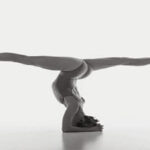What is Yoga Anyway?
I’m rethinking my first yoga class. As a freshman, I signed up for yoga as an elective course of physical education. My dear grandma has been practicing yoga for many years, so I know very little about the content of yoga, but I don’t know how much impact that course will have on my life in the end. Since entering the gym of that university for the first time, I have studied various styles of yoga with many excellent teachers, taught yoga in different capacities for more than ten years, and owned two yoga studios in the opposite corner of Colorado.
Twenty years after the first class, I started another deep yoga teacher training; Rooted is a 230-hour “apprentice” with inspiring Jessica Patterson from colorado springs. For the RootEd application, I was asked to answer “What is yoga?”
This simple and direct question got me into trouble, even after practicing yoga for twenty years. In the past 20 years, yoga has become a billion-dollar industry in the United States, and it is difficult for us to ignore the teaching that this ancient practice finally gives us.
I recently remembered the true meaning of yoga by rereading Jivamukti Yoga by David Life and Sharon Gannon. This book aims to reassemble yoga fragments which are wrongly analyzed in western culture, so that we can understand the whole exercise more comprehensively. Contrary to most current descriptions, yoga is not just exercise. On the contrary, it is a purification system of body, mind and spirit. In short, the purpose of yoga is enlightenment, and enlightenment is to reveal the true self, or soul. Strong, soft muscles and relaxed mentality are just extra benefits on the road to enlightenment.
Our body is a complex carrier, which we can use to move towards enlightenment. As “Life and Gannong” conveys, “It is good to have a body, because it is the carrier of consciousness. When we mistake our vehicle for our true self, the problem comes. ” It is a great paradigm shift to truly realize that we are not just mind and body, especially when the dissolution of our personality and self often makes people uncomfortable or fearful.
Yoga is the only way I know to approach the greater reality in my heart. When I feel the flow of Plana in a body yoga practice, I will lose my identity with my body, and when I observe my mind in meditation, I will lose my identity with it. Therefore, through yoga practice, I can begin to uncover my true self, or soul.
In order to truly lift the veil of illusion (Maya) and see our true self, we must first solve and remove personal obstacles, and invalidate core beliefs and unconscious habits. Avidya (ignorance of your true identity and divine self) must be purified first. In the past year, I found that other treatments, such as body-centered therapy, such as thin film transistor and EMDR, are wonderfully integrated with yoga, helping me to name and release restrictive patterns and beliefs. When I feel the veil of illusion falling off, I think I can open my heart and serve my massage clients and yoga students.
Of course, my job is definitely service, or cause and effect yoga. At the bottom of my business card is Robin Delanat Tagore’s famous saying: “When I sleep, I dream that life is happy. I woke up and saw that life is service. I acted, look, service is happiness. ” This is the truth of my growing health practice; Serving others brings me happiness.
In their teaching about Jivamukti yoga, David Life and Sharon Gannon urged us to replace the question “how will yoga serve me” and write “Lord, how can I serve you?” This shows the important (and often overlooked) foundation of yoga practice-karma yoga. Causal yoga is a selfless service, or a practical method to reduce the pain of the world and oneself. Look, from your sympathy for others, you will realize your happiness! When we suffer from loneliness or self-pity, an immediate cure is to pay more attention to others.
When we release selfishness as our first principle, the potential of true happiness opens up. By serving all beings, we can experience the joy of ending suffering. When an action is selfless, it will eventually lead to liberation. This is the foundation of yoga.
When yogis seek relief, we hope to improve our actions and start with our thoughts. Admittedly, this is an area where I lack discipline and consciousness. As long as I show up in yoga class, spread out the mat, sweat and breathe for 90 minutes, it will be much easier to think that I am a good yogi. My meditation practice is often neglected. However, since actions lead to liberation and thoughts lead to actions, the most important thing is to observe and filter thoughts first.
A continuous meditation exercise allows us to clearly see the operation of our minds and the intention behind our actions. Before we act, we must ask ourselves “what is the intention”, because the intention behind the action is always more important than the action itself.
By clearing our minds, we can open our hearts and let love guide our thoughts and actions. Yoga practice will help to keep calm in all situations, teach us to be transparent, and let all emotions flow through us without letting us fall. “The yogi calmly accepts a happy turning point, knowing that happiness and pain will never last. A calm mind will free you from anxiety.
When I started my exploration of yoga tradition in the next 20 years, I hope to clarify and improve my understanding of what yoga is and how I apply it in my daily life. As time goes by, through practice and patience, the level of illusion will elevate and reveal my true self, my radiant soul. Then I will be able to practice causal yoga better and serve you with an open and calm heart, my dear reader. Finally, this is what yoga means to me.

